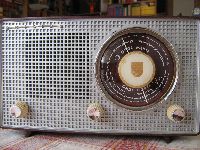 |
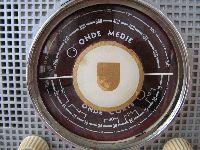 |
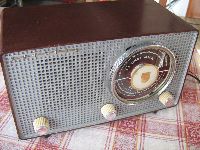 |
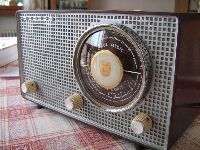 |
 Philips
mod. BI-180A - Italy - 1959.
Superheterodyne
radio with medium wave and short wave reception.
The circuit uses five
noval tubes: UCH81, UF89, UBC81, UL84 and UY85.
The antenna is a length of about 2 meters
of wire and the Intermediate Frequency is at 460 KHz.
The receiver is powered by the mains
and has a universal voltage change from 110 to 220 VAC.
The radio has a plastic cabinet with a round speaking scale on the right
and a speaker grill on the left.
In the lower part there are the three control knobs: from the
left the volume switch, in the center the range change and on the right
the tuning knob.
The switch is of the pull-out type, to turn on the radio you
have to pull the knobs.
The rear grille is made of hardboard and inside it carries a
sheet with the components layout.
The dimensions are: 17x28x14 cm.
Philips
mod. BI-180A - Italy - 1959.
Superheterodyne
radio with medium wave and short wave reception.
The circuit uses five
noval tubes: UCH81, UF89, UBC81, UL84 and UY85.
The antenna is a length of about 2 meters
of wire and the Intermediate Frequency is at 460 KHz.
The receiver is powered by the mains
and has a universal voltage change from 110 to 220 VAC.
The radio has a plastic cabinet with a round speaking scale on the right
and a speaker grill on the left.
In the lower part there are the three control knobs: from the
left the volume switch, in the center the range change and on the right
the tuning knob.
The switch is of the pull-out type, to turn on the radio you
have to pull the knobs.
The rear grille is made of hardboard and inside it carries a
sheet with the components layout.
The dimensions are: 17x28x14 cm.
Note: Thanks to
Mr. Piercarlo C.
for providing me with this copy. |
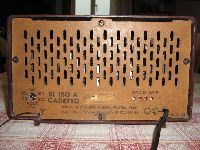 |
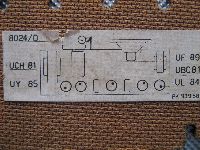 |
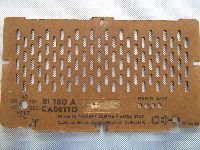 |
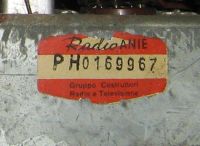 |
 Some photos were taken during the restoration
Some photos were taken during the restoration |
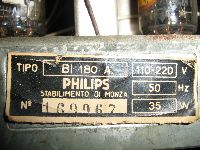 |
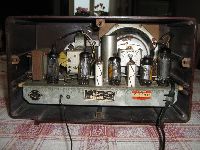 |
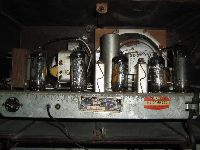 |
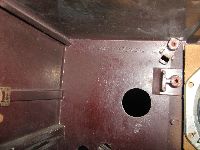 |
 Alcune foto
sono state prese durante il restauro Alcune foto
sono state prese durante il restauro |
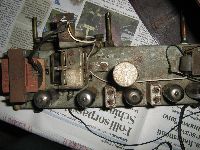 |
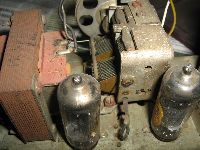 |
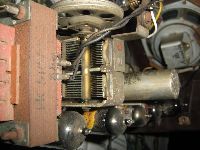 |
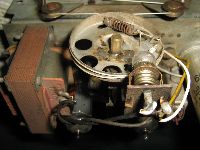 |
 Philips
mod. BI-180A - Italia - 1959. Radio supereterodina con ricezione
in Onde
Medie e in Onde Corte. Il circuito
utilizza cinque valvole noval: UCH81, UF89, UBC81, UL84 e UY85.
L'antenna è uno spezzone di circa 2 metri di filo e la Media Frequenza è
a 460 KHz. Il
ricevitore e' alimento tramite la rete elettrica e dispone di cambio-tensione
universale 110-220 V. La radio ha il
mobiletto in plastica con la scala parlante rotonda sulla destra e la griglia
dell'altoparlante sulla sinistra. Nella parte in basso ci sono le tre
manopole di comando: da sinistra l'interruttore-volume, al centro il
cambio gamma e sulla destra la manopola di sintonia. L'interruttore e' del tipo a
estrazione, per accendere la radio bisogna tirare le manopola. La
griglia posteriore e' in faesite e al suo interno porta incollato un
foglio con le informazioni sulla disposizione dei componenti. Le dimensioni
sono:
17x28x14 cm.
Philips
mod. BI-180A - Italia - 1959. Radio supereterodina con ricezione
in Onde
Medie e in Onde Corte. Il circuito
utilizza cinque valvole noval: UCH81, UF89, UBC81, UL84 e UY85.
L'antenna è uno spezzone di circa 2 metri di filo e la Media Frequenza è
a 460 KHz. Il
ricevitore e' alimento tramite la rete elettrica e dispone di cambio-tensione
universale 110-220 V. La radio ha il
mobiletto in plastica con la scala parlante rotonda sulla destra e la griglia
dell'altoparlante sulla sinistra. Nella parte in basso ci sono le tre
manopole di comando: da sinistra l'interruttore-volume, al centro il
cambio gamma e sulla destra la manopola di sintonia. L'interruttore e' del tipo a
estrazione, per accendere la radio bisogna tirare le manopola. La
griglia posteriore e' in faesite e al suo interno porta incollato un
foglio con le informazioni sulla disposizione dei componenti. Le dimensioni
sono:
17x28x14 cm.
Nota:
Grazie al Sig. Piercarlo
C. per avermi fornito il presente esemplare. |
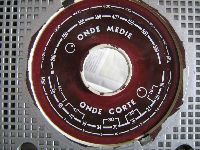 |
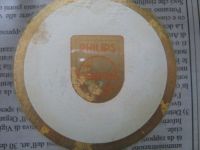 |
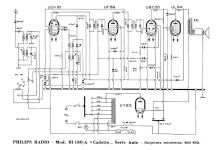 |
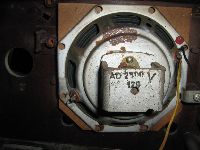 |

